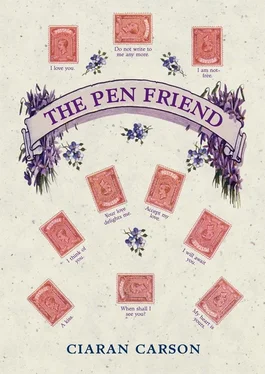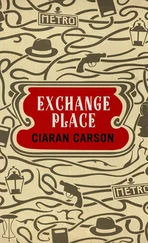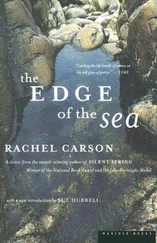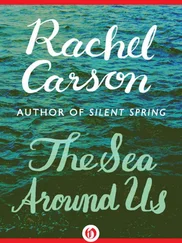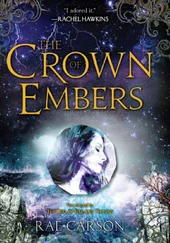My father, like others of his social class, left school at fourteen and joined the Post Office. It was there that he first heard Irish spoken by two fellow workers. By eighteen he was fluent in Irish and began teaching the language. He met my mother, Mary Ellen Hanrahan, in 1942 when she began attending his classes, and they married in 1944, just before the end of the Second World War. They brought up their children in Irish, so Irish was my first language, though I hesitate to say that it is my first language now, so deeply am I imbued with English. In the meantime my father had learned Esperanto. A certain Willie Tomelty, an Esperantist, came to my father’s Irish class. He kept badgering my father to learn Esperanto but my father had no initial interest. However: Tomelty had lots of pen-friends throughout Europe, one of whom was a Dutchman, Johann Wouters, who lived in your father’s native town of Delft. As you know, Delft is a small place, and I wonder if Wouters and your father knew each other.
After a while the Dutchman began to express an interest in Irish affairs, and he asked Tomelty to teach him Irish through the medium of Esperanto. Tomelty was ashamed to admit he was only a beginner at Irish himself, so one day he asked my father if he would teach Irish to the Dutchman. My father agreed; Tomelty gave his address to the Dutchman, and the next week my father got a letter, in English, from the Dutchman, saying he hoped my father had English, and if my father would teach him Irish, the Dutchman would teach him Esperanto as a recompense. So they began to write to each other. In a couple of months my father had learned Esperanto, he sported the Esperantist green star on the lapel of his postman’s uniform, and Johann Wouters was making good progress in Irish. English was soon dispensed with. They corresponded for some fifty years.
As I write this account I wonder, as I have always done, what sort of single-minded young man my father was. To learn Irish was regarded as eccentric then, even among the Nationalist population; Esperanto even more so. And Esperanto brought my father into contact with some strange people, notably Harry Foster, a spiritualist whom my father would engage in endless theological wrangles in the study of Ophir Gardens, where I am writing now. My father, as a fervent Catholic, subscribed to the Church’s orthodoxy that the supposedly paranormal phenomena produced by spiritualism were cheap conjuring tricks devised for the gullible, and that in the few instances where the phenomena were inexplicable by science, they were likely to be the work of the devil. Yet my father, as a Catholic, believed in the communion of saints, and looked forward to the resurrection of the dead, and the life of the world to come, a position, it seemed to me even then, to be not so far removed from that of the spiritualists. The relationship between Foster and my father was complicated by Foster’s claim that Esperanto was making great progress in the afterlife, and that the spirits of the dead had spoken in Esperanto to him and to others through Foster’s wife, a medium of some repute in spiritualist circles. And I wondered if the green star was in heaven as it is on earth, an emblem of the communion that is still possible after the fall of Babel.
And now I remember what perfume you wore that night in New York, chosen to go with the muted Irish theme. It begins as a powerful evocation of newly cut grass, a flower-strewn field of oakmoss, bergamot and orange blossom, sandalwood and fern, and there’s a whisper of a breeze carrying it elsewhere, a spicy note of cinnamon that clings as the bright green image fades: Vent Vert by Pierre Balmain. Green Wind. Though Green Breeze would sound better.
All manner of service in the field
Of course you knew I’d recognise the image immediately — Jan Vermeer’s Lady Writing a Letter with Her Maid , which hangs in the National Gallery in Dublin. And you knew I would think immediately of the bizarre set of circumstances which preceded its being placed there. In April 1974 Bridget Rose Dugdale, daughter of Lieutenant Colonel James Dugdale, a wealthy landowner and former chairman of Lloyd’s, led a gang of three armed IRA men to Russborough House, the home of Sir Alfred Beit, whose family had made its fortune in partnership with Cecil Rhodes in the De Beers Consolidated Mines of South Africa. Beit and his wife, Clementine, were dragged by them to the library, where they were bound and gagged. The gang then proceeded to cut nineteen paintings from Beit’s priceless collection from their frames. Among them were works by Goya, Rubens, and Gainsborough, and the most valuable of all, Vermeer’s Lady Writing a Letter with Her Maid . Dugdale had already achieved some notoriety: a year previously she had received a suspended sentence for her part in an art theft from her family’s country house near Axminster; and she was wanted by the police in Northern Ireland for her suspected involvement in the hijacking of a helicopter which had bombed an RUC station in Strabane, in January 1974.
Following the raid on Russborough House, the thieves demanded the release of the Price sisters, imprisoned in England for their part in a London car-bombing, and a ransom of £500,000 in exchange for the paintings. Eleven days later the paintings were found in the boot of a car at a rented cottage in Glandore, County Cork. Dugdale was arrested, charged and sentenced to nine years’ imprisonment. The paintings were returned to Russborough, and two years later Beit established a trust to retain the house and its collection for the Irish state, and the National Gallery thus became the custodian of the Vermeer, though it was still in situ in Russborough. Twelve years later, in May 1986, twelve masked and armed men, led by the notorious Dublin criminal Martin Cahill, aka The General, broke into Russborough and stole fifteen paintings, including the Vermeer. In September 1993 a cache of stolen paintings was discovered in the boot of a car at Antwerp airport. The Vermeer, somewhat scratched and dented, was among them. It was given to Andrew O’Connor, the chief restorer at the National Gallery of Ireland, to repair the damage.
I look at your postcard again. A long dark green curtain seemingly has been withdrawn as if to invite us to gaze into the room, where a woman sits writing intently at a table covered with an oriental rug. The bodice of her dress is pale green, her sleeves and cap snowy white; she is wearing pearl earrings. Behind her, and to her right, more plainly dressed, stands a woman whom we take to be her maid. She gazes as if her mind has wandered out the tall leaded window, her mouth showing the glimmer of a smile. On the tiled floor in the right foreground is a little still life which includes a letter with a crumpled wrapper, a stick of sealing-wax, and a red wax seal. The seal, which was only discovered during O’Connor’s restoration of the painting, is a typical Vermeer conundrum, for it invites us to consider if a seal could remain unbroken if the letter we imagine it belongs to has been ripped open and discarded with such apparent haste — and recently, for we imagine the efficient-looking maid would have dealt with the mess on the floor. Perhaps the seal betokens a miraculously intact virginity. And why the empty chair in the foreground, which has not been tidied away against a wall, as it should in a Dutch household of that period? It looks as if a person unknown to us has been here not that long ago, a guest or messenger whose annunciation the writing woman is about to answer.
I turn the card over. It’s postmarked Berlin, which leads me to suspect that your previous card contained implications I failed to grasp. And it took me a while to arrive at the source of this message, which read, All manner of service in the field . The expression had an archaic, familiar ring to it. I looked at the Vermeer again for clues. The painting of a painting on the rear wall of the room is a message within a message, a depiction of The Finding of Moses. I turned to the Bible, to Chapter 2 of the Book of Exodus, which contains the story of how the Pharaoh commanded every Israelite male child to be killed at birth; but one mother consigned her boy to a vessel made of rushes and pitch, and laid him in the weeds by the river’s brink, where he was discovered by the daughter of Pharaoh, and she called him Moses, because Moses means ‘saved’. Moses is like a message in a bottle, delivered from his mother’s womb into the bosom of the Pharaoh’s daughter, who is a surrogate Madonna; and he will later become a messenger, as he delivers the Commandments to the people of Israel, all of which is appropriate to Vermeer’s painting. We take it that the maid will be asked to deliver her mistress’s letter: she is thus a messenger, a kind of Gabriel, for Gabriel is the messenger of God. And in the Dutch tradition, Moses represented God’s ability to unite opposing factions, which had some relevance to my own divided city of Belfast.
Читать дальше
